Annual Conference: Challenges facing Central Banks in the 2020s - Qatar Centre for Global Banking and Finance
King’s Business School is delighted to announce the Annual Conference of the Qatar Centre for Global Banking and Finance will be...
05 July 2021
The Qatar Centre for Global Banking and Finance's inaugural Annual Conference took place on Monday 17 and Tuesday 18 May 2021. The Conference featured 34 speakers from central banks, think tanks, and leading universities to discuss central banks' current challenges.

Professor Lucrezia Reichlin (London Business School) and Lord Macpherson of Earl's Court (former Permanent Secretary to the UK Treasury) delivered the Conference's keynote addresses.

Professor Reichlin discussed the future of monetary policy, drawing on the example of the European Monetary Union. She noted that the recent changes in the size and composition of central banks' balance sheets are becoming the new normal, with important implications for the institutional design of central banks. The need for bridging the gap between monetary and fiscal policies was noted, and emphasis was placed on the importance of the credibility of their fiscal backing and on a degree, albeit limited and contingent, of coordination among the fiscal and monetary policy authorities.
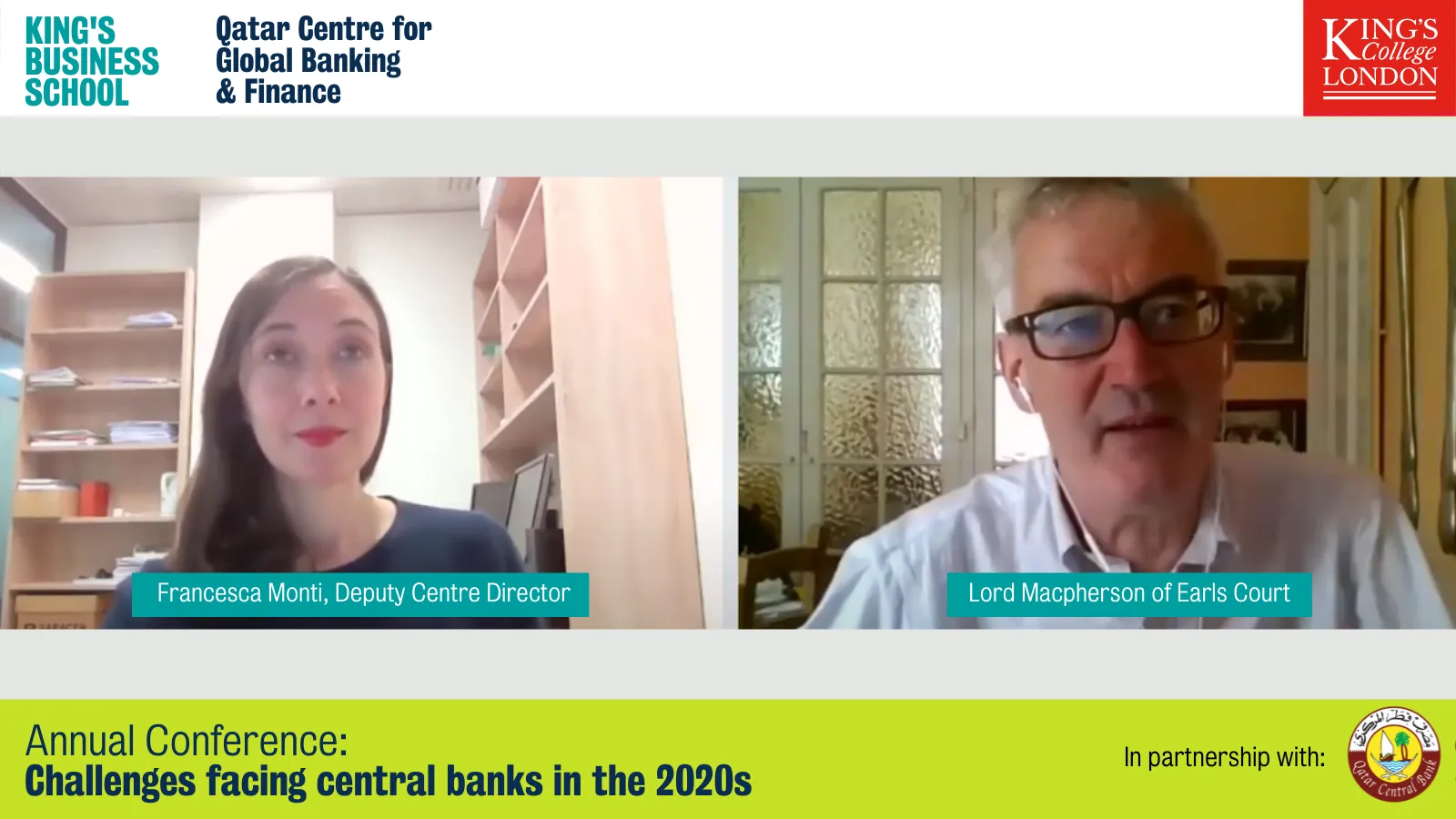
Lord Macpherson discussed the future of central bank independence by looking at the 327-year relationship between the Treasury and the Bank of England. The severity of the coordination problem between monetary and fiscal policy was asymmetric, he argued. In an economic downturn, both are pulling in the same direction as they attempt to stimulate the economy. Nevertheless, if inflation were to rise, the Bank of England would need to raise interest rates, increasing the debt financing burden to the Treasury. The objectives of the two authorities would be divergent in that case.
Florin Bilbiie (University of Lausanne) presented his work "Aggregate-Demand Amplification of Supply Disruptions: The Entry-Exit Multiplier", examining the role that firm entry and exit can play in amplifying supply shocks, with the experience of the Covid-19 recession as an example. The work emphasises the role of an "entry-exit multiplier", highlighting that price rigidities can accelerate the closing of businesses in response to a supply disruption. The model can capture several observed characteristics of supply-led recessions. Namely, the output below an economy's potential and a decrease in total hours worked, which have not been well-captured by other New Keynesian models.
Ambrogio Cesa-Bianchi (Bank of England) presented 'The Transmission of Keynesian Supply Shocks', which finds empirical evidence that sectoral supply shocks can lead to a fall in aggregate demand due to the possible complementarity across products, by looking at sectoral data for the United States. He also presented a multi-sector model with input/output linkages, which make sense of the empirical results and matches the data quite well generally for the dynamics of the economy within a recession.

While Florin stressed the insights of a simple, tractable model that captures essential dynamics of firm entry and exit and its role in recessions, Ambrogio highlighted the advantages of taking theoretical predictions to the data to distinguish between different possibilities. Both approaches are necessary to understand the unusual events of the past year and inform policy to facilitate a quick recovery.
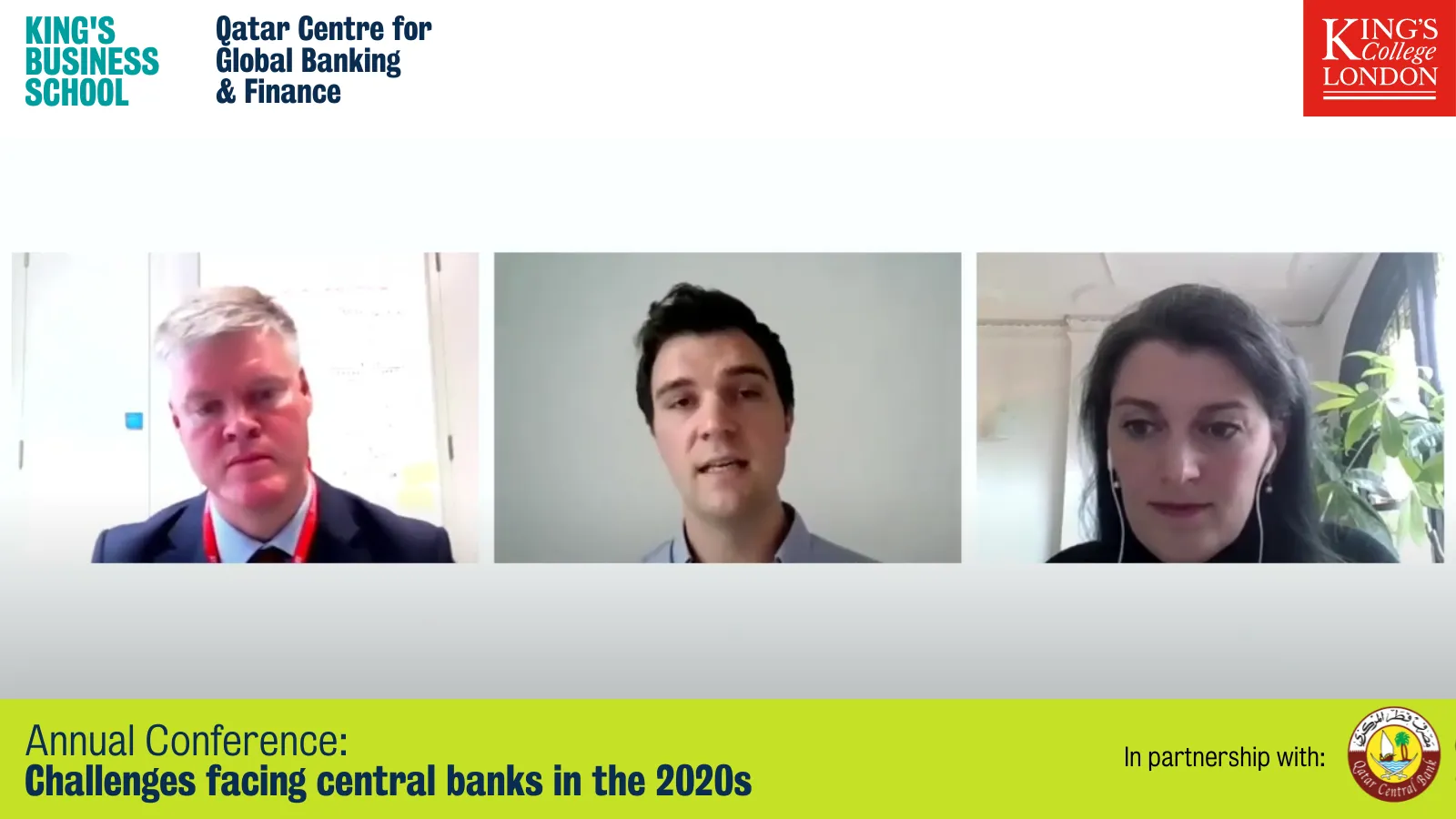
The first paper presented by Florian Heider (European Central Bank), "Why So Negative? The Effect of Monetary Policy on Bank Credit Supply across the Euro Area", offered a unified view of the multiple channels of monetary-policy transmission in a heterogeneous currency union, zooming in on the role of banks' credit supply. Focusing on the euro-area, the authors distinguish between core and periphery countries, emphasising how the traditional bank capital channel dominates in the latter countries while a 'novel' deposit channel is at play in the former ones. The paper's findings have broader implications for the distributional effects of different models of monetary policy transmission in currency unions and when the presence of heterogeneity is particularly prominent.
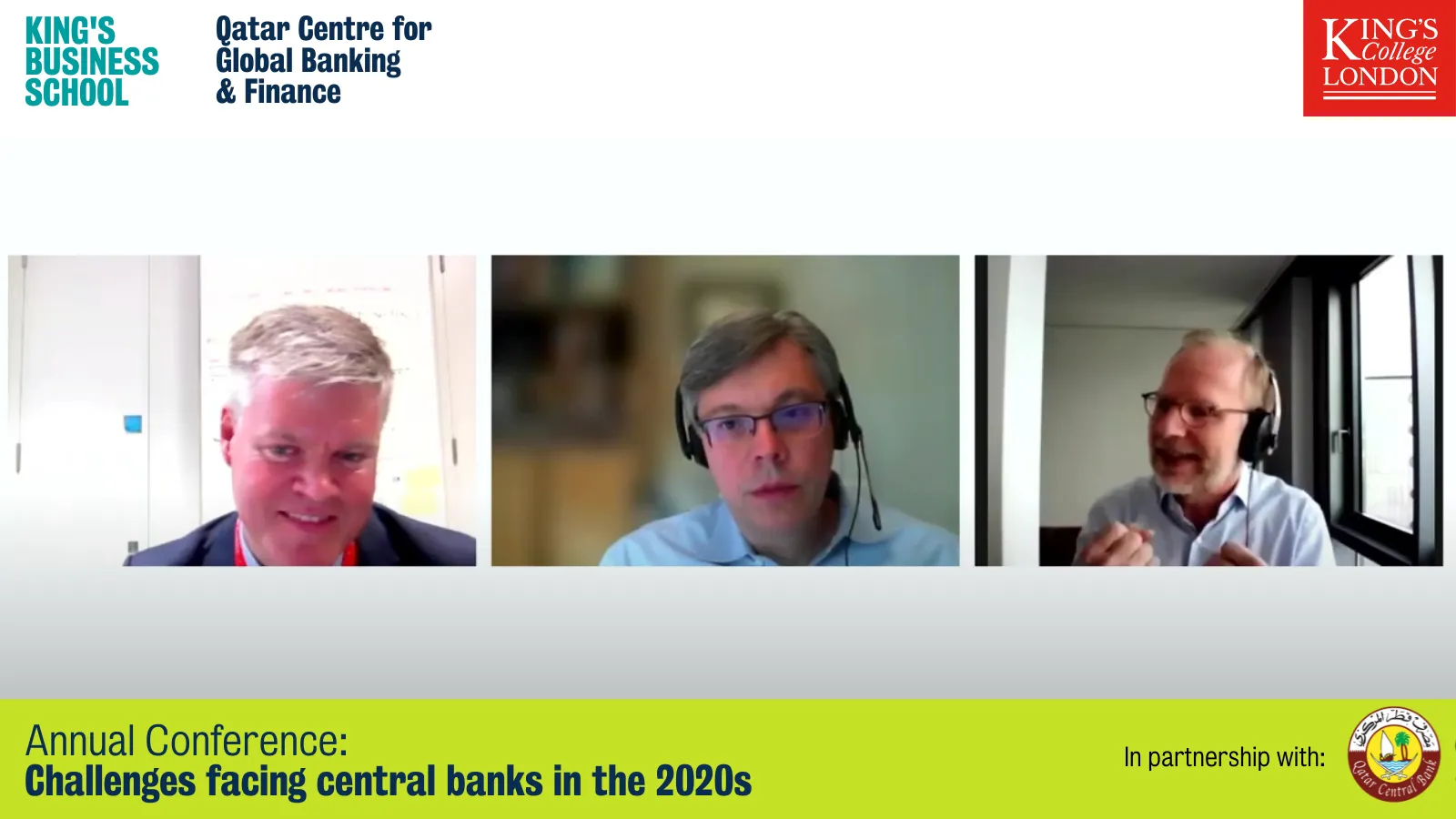
The second paper, "Reversal Interest Rate and Macroprudential Policy", presented by Matthias Rottner (European University Institute), discussed the conditions that can give rise to a reversal interest rate, the rate at which the usual monetary transmission mechanism through the banking sector breaks down and monetary policy loosening generates a contractionary rather than expansionary effect. The authors advance a newly developed non-linear general equilibrium model with a bank lending channel and calibrate it to match salient features of the euro area economy for the current low-interest-rate environment. This work illustrates that the risk of entering this reversal rate territory creates a new motive for macroprudential policy, with evidence demonstrating that adopting a countercyclical capital buffer can lower the probability of hitting the reversal interest rate. Moreover, the proposed framework creates a new strategic complementarity between negative interest rates and macroprudential policies.

Leonardo Melosi (Federal Reserve Bank Chicago) presented "Hitting the Elusive Inflation Target, which recommended that a central bank with a symmetric inflation target adopt an asymmetric strategy in a low-interest-rate environment. The reason is that individuals anticipate that the low rates will constrain the policymaker's response, and this in itself puts deflationary pressure. The policymaker would combat this deflationary bias by committing to an asymmetric strategy that responds less aggressively when inflation is above target.
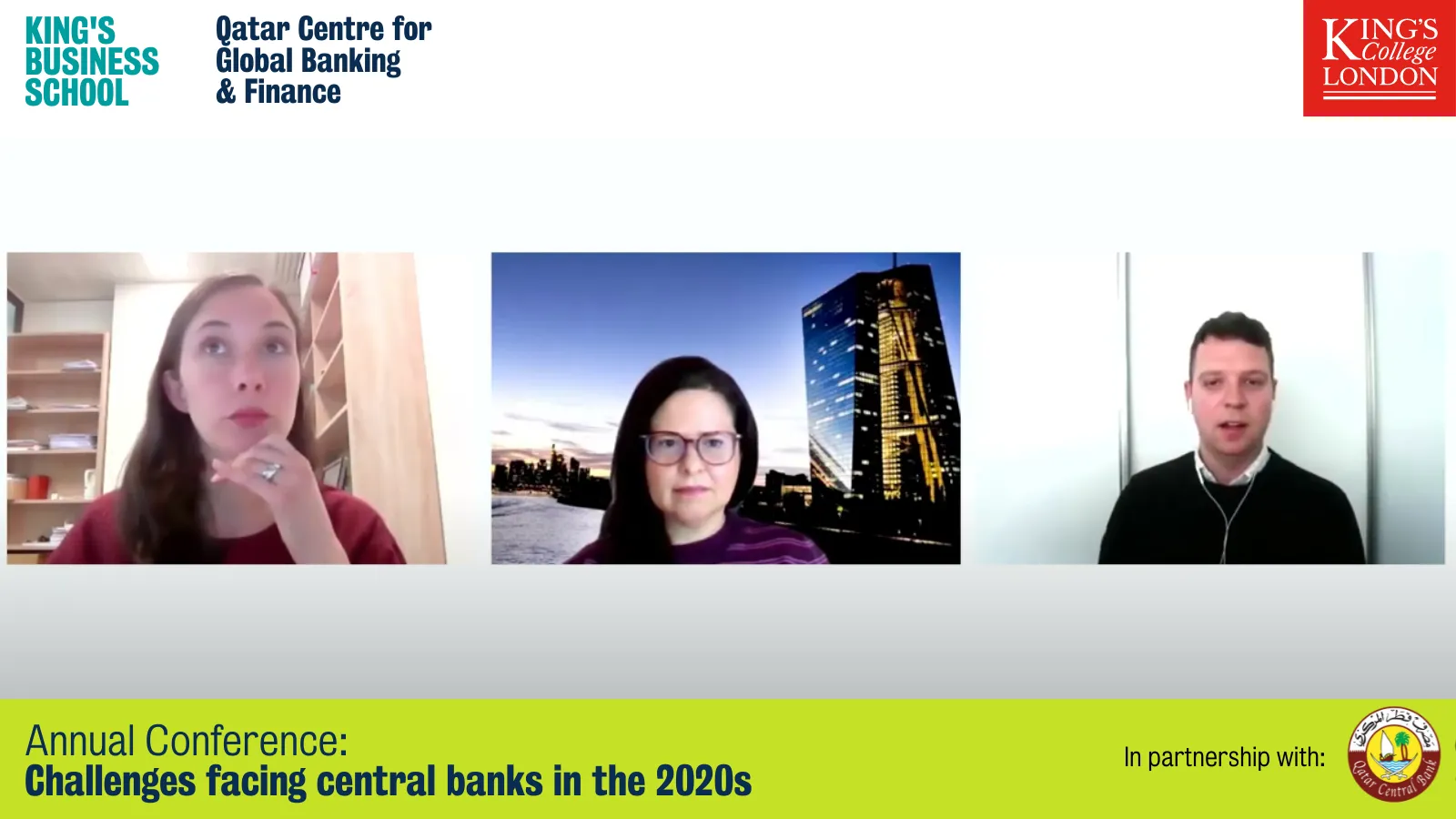
The second paper, "Falling Natural Rates, Rising Housing Volatility and the Optimal Inflation Target" presented by Oliver Pfäuti (University of Mannheim), proposed a model linking house price volatility to monetary policy constrained by the zero lower bound. As long-term interest rates have fallen, subjective beliefs, such as optimism in a rising market, have caused an amplification in house price responses. This increased volatility has been replicated in the long-term rate and consequently poses a greater risk of hitting the zero lower bound. Therefore, the model implies that the closer the long-term rate is to zero, the higher the optimal inflation obtained compared to a rational expectations model. However, the wider implications are for asset prices to be included within the central bank mandate, whether in terms of the optimal inflation target or macroprudential measures.
The first day concluded with a panel chaired by Tobias Adrian (International Monetary Fund) featuring Argia Sbordone (Federal Reserve Bank of New York), Frank Smets (European Central Bank) and Gertjan Vlieghe (Bank of England). The four panel members offered their perspectives on what is next for monetary policy regarding monetary policy tools and frameworks, and outlook.
In developed economies, there has been a strong support to the economy from both fiscal and monetary policy. There will need to be a careful assessment of the dynamics of labour markets and the persistence of the building cost pressures as it returns to normal functioning, the stimulus policy unwinds. Prices can be expected to be volatile over the next year. However, monetary policy should focus on the medium-term outlook and not react too quickly to inflation rises that may be temporary. As supply constraints ease, the economy may require further stimulus to facilitate the transition to normalcy. The Phillips curve had been extremely flat in recent years but could be expected to steepen in future. Varying levels of support were voiced for adding negative interest rates as a potential means for additional stimulus for the economy in a low-rate environment.

Participants discussed central banks' role in supporting the transition to a low carbon economy. In the Bank of England and the European Central Bank framework, the monetary policy committee's mandate is primarily to ensure price stability. Risks from climate change were thought to be more pertinent for financial stability policy and were being analysed via climate risk stress tests.

The first paper, "Financial Stability Governance and Central Bank Communications", presented by Juan M. Londono (Board of Governors of the Federal Reserve), provided novel evidence on the interaction between financial stability communications and central banks' governance and oversight frameworks. Utilising text analysis techniques, it documents that the effect of communication on the evolution of the financial cycle critically depends on differences in governance frameworks across central banks. A comparison across institutions with different financial stability governance characteristics shows that, following a deterioration of financial conditions, central banks participating in interagency financial stability committees transmit a calmer message with an alleviating effect.

The second paper, "Voting Right Rotation and the Behaviour of Committee Members – a Case Study of the US Federal Open Market Committee", presented by Michael Ehrmann (European Central Bank), investigated whether voting rights affect the behaviour of committee members. Focusing on the Federal Reserve Bank, the empirical results suggest that presidents who have voting rights are more involved and tend to focus more on regional economic conditions. In addition, the evidence shows that financial market participants react less strongly to presidents' speeches when they are voting. Although surprising, the authors argue that if the speeches by presidents with voting rights emphasise regional economic conditions, market participants will find it relatively easier to extract relevant information about the upcoming monetary policy decisions from the speeches by presidents without voting rights.
This session analysed two aspects of the global financial system that have played a role in past financial crises – shadow banking and capital flows.
The first paper, "Central Banking and Shadow Banks", presented by Quentin Vandeweyer (Chicago Booth), modelled the impact of the growth of shadow banks on central bank practices. It captured policymakers' concerns that many market liquidity providers are outside of their regulatory reach and thus prevented from access to central bank liquidity. These shadow banks are increasingly prevalent relative to traditional banks, which has driven central banks to pursue increasingly unconventional policies.
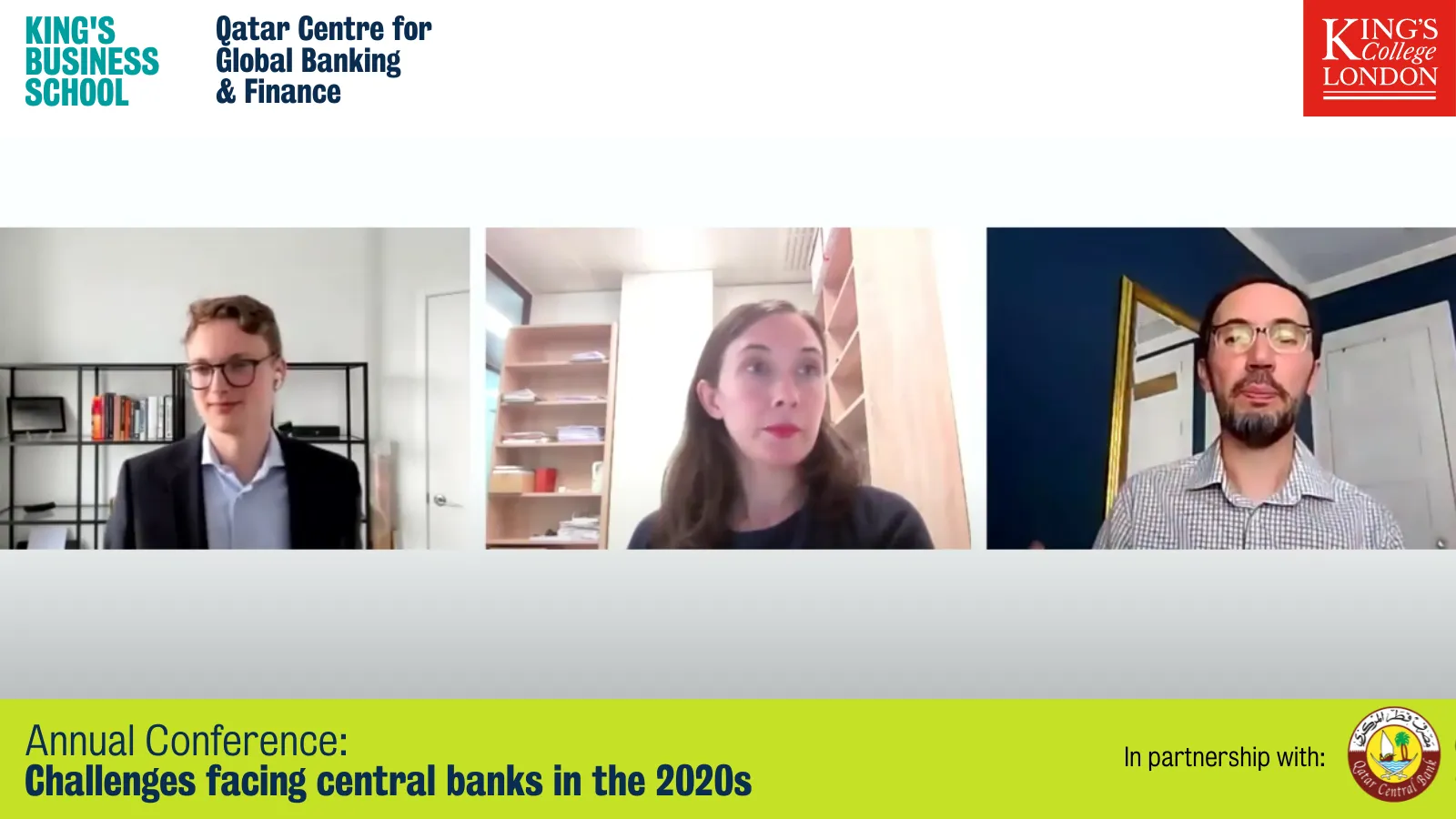
The asset pricing model determines that only a large-scale asset purchase programme can stabilise asset prices when the shadow banking sector is significant. However, there is a limit to this, as macroeconomic efficiencies deteriorate with the increasing number of assets on the central bank balance sheet, reflecting their lack of expertise in owning these assets. This issue goes to the heart of one of the central banks' core functions – the backstop liquidity provider. Where are the limits as the buyer of last resort? If unconditional and unlimited, then it can create excessive risk-taking by shadow banks. However, if shadow banks provide other functions to banks, then central banks could alter the cost of regulatory coverage offered to those currently outside the system. The paper advocates that central banks consider either opening up their liquidity facilities to shadow banks or they employ market-maker of last resort operations to influence asset market liquidity directly.

The second paper, "How Does International Capital Flow?" presented by Andrej Sokol (European Central Bank), highlighted the importance of studying gross capital flows. Although empirical studies have shown its relevance, the theoretical models continue to use net flows. The model presented attempts to address this issue and demonstrate how gross flows can challenge some long-held assumptions. This approach tells a much richer story of the economic transmission mechanism. As an example, the paper demonstrates the limitations to policymakers of focusing on the current account deficit as evidence of a country's financial vulnerability. The model shows, as intuition would suggest, that greater relevance is attached to whether the total stock of debt can be refinanced in the face of a sudden stop. This would shift policymaker focus away from the current account adjustment process and instead look at the vulnerabilities in the refinancing process.
Irene Monasterolo (Vienna University of Economics and Business) presented "On the Dependence of Investor's Probability of Default on Climate Transition Scenarios", which examined investors' exposure to climate transition risks as policies are implemented to reduce economies' reliance on fossil fuels. The paper stresses the importance of the correlation of default across a portfolio of corporate bonds exposed to transition risk. The presentation also highlighted the role of leverage in default probabilities, with more leveraged investments non-linearly increasing the risks. Importantly, the authors distinguish an orderly and disorderly transition. The idea of a disorderly transition captures the possibility that regulation is imposed "too late" for investors to react smoothly to the change in policy, resulting in stocks of stranded assets, such as fossil fuels that unexpectedly cannot be extracted and sold, but must remain underground.

Francesca Diluiso (MCC Berlin) presented "Climate Actions and Stranded Assets: The Role of Financial Regulation and Monetary Policy", which presents a dynamic stochastic general equilibrium model to determine the effects that a carbon tax would have on macroeconomic outcomes. She found that a carbon tax has small effects on output and inflation. Shed also showed that "green bond" purchases can be an effective way for central banks to provide stimulus to the economy and correct market inefficiencies that may slow the transition to a greener economy. The paper also stressed the advantages of advanced planning and early policy to avoid substantial disruptions from quickly rising carbon taxes.
The second panel was chaired by Nicolas Véron (Bruegel and the Peterson Institute), Vitor Constancio University of Navarra), Donald Kohn (Brookings Institution) and Carolyn Rogers (Basel Committee on Banking Supervision) to discuss what next for financial stability.
The participants discussed risks to financial stability from the shadow banking sector, particularly repo markets, which remained largely untouched by regulation after the last crisis. The March 2020 episode of volatility and illiquidity in US treasuries had emphasised the need for policy action to reduce the demand for liquidity from funds in periods of stress. This may require policies that limit liquidity transformation and leverage by non-banks or a rethink of leverage ratio rules for dealer banks. Banks, by contrast, had entered the pandemic on a strong footing, reflecting the impact of Basel III and the unprecedented range and degree of public support measures that had been put in place since Covid struck.
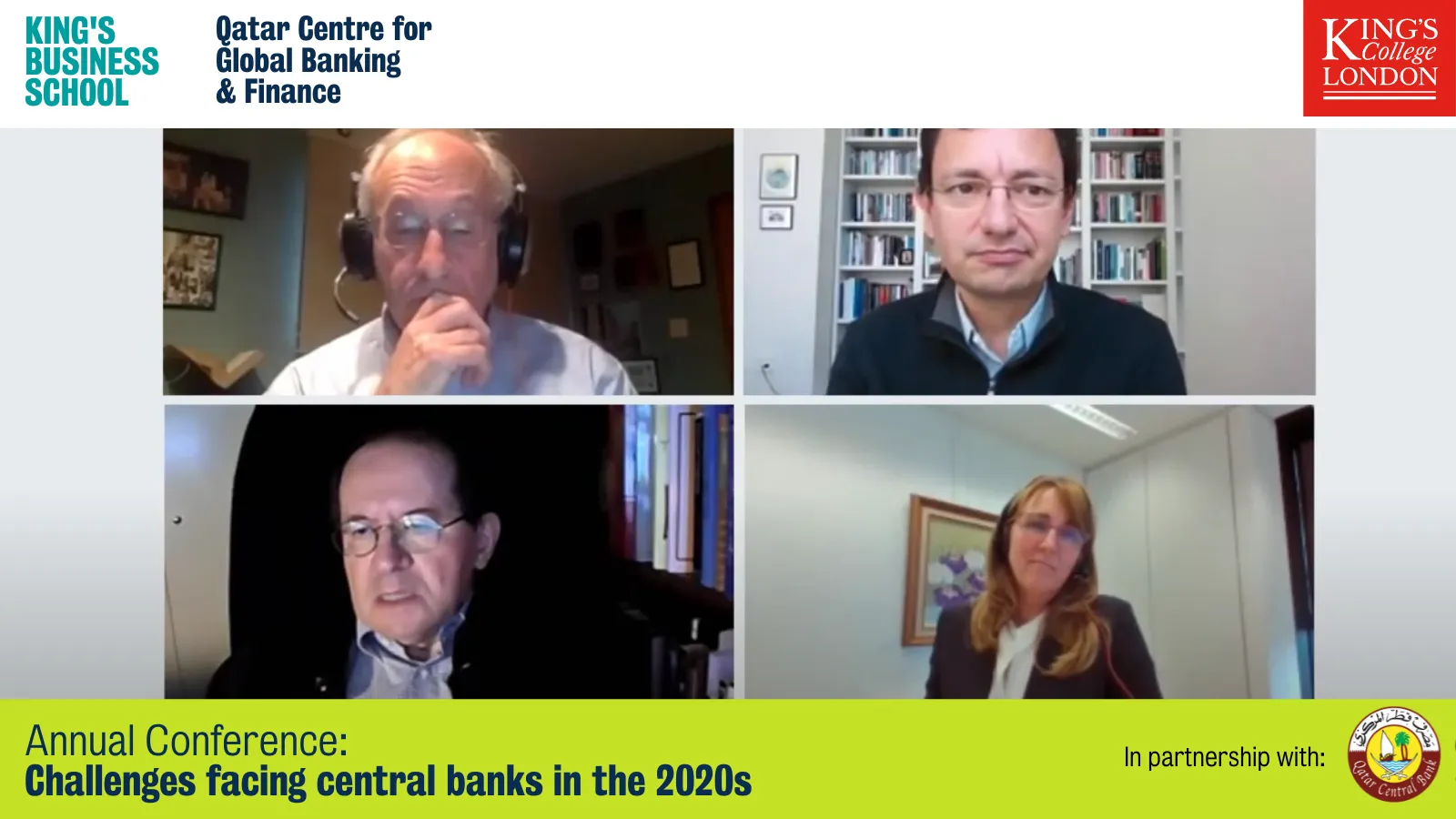
Participants discussed the risks that worried them most. Asset valuations were thought to be stretched in many markets. The Basel III standards needed to be finalised and implemented in full by all. One panellist highlighted complacency as the key risk.
You can watch the recorded videos from the Conference via our dedicated Conference playlist.
King’s Business School is delighted to announce the Annual Conference of the Qatar Centre for Global Banking and Finance will be...